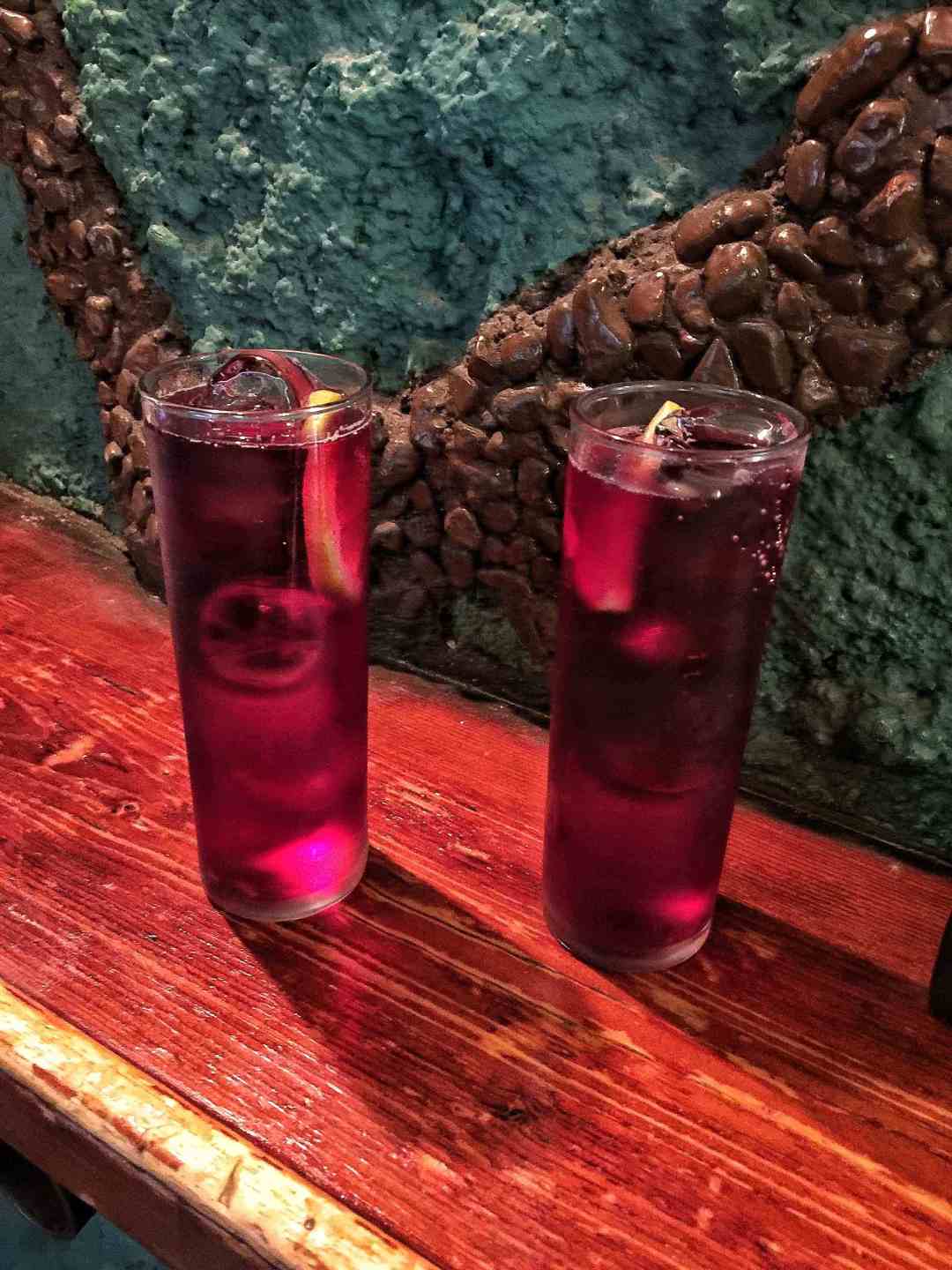
Red Wine of Summer.
Tinto de Verano, or also seen in Spanish menus as Tinto Verano, is one of Spain’s most beloved local, everyday drinks for as soon as the weather warms.
All About Tinto de Verano
The Meaning of Tinto de Verano
“Tinto” translates to “red wine” and “verano” means “summer.” So tinto de verano literally translates to “red wine of summer.”
The Origin Story
Around the 1920s near Córdoba, Spain, restaurant owner Federico Vargas of Venta Vargas combined red wine and soda pop. It was then dubbed “un Vargas.”
As its popularity spread around the country, it became more known as tinto de verano because it was and still is the perfect summer drink when going out. Today, the standard tinto verano consists of red wine and what’s locally known as gaseosa which is a carbonated lemon soda that’s not as sweet as 7-Up or Sprite.
Where to Find it Today
Tinto de verano is a common drink in local tapas bars and dive bars all over Spain, especially during summer months when the best thing to have is an ice cold cocktail that’s not too strong.
Because the drink mixes red wine and soda, it is one of the more affordable items at a bar. So affordability along side the refreshing factor as well as its low alcohol content makes tinto de verano a popular choice for day drinking and tapas crawls.
How to Order it Today
In many tapas bars, you can order tinto verano and you’ll get a pre-made conconction from a pitcher or on tap, a bottle, or the mix of the bartender in which case you may be asked if you want it “con limon o con blanca.”
Con limón means red wine with lemon soda like the local Casera limón or Fanta limón. The drink will be sweeter in taste and hazier in color.
Con blanca means using the local gaseosa which is less sweet in taste and clearer in color.
Tinto Verano versus Sangria
Outside of Spain, most people do not know of tinto de verano. The more known Spanish drink is sangria. However, in Spain, sangria is considered a touristy drink.
Spaniards do drink sangria, but mostly at home or in house parties where you can leisurely drink in the higher-alcohol content cocktail.
At tapas bars and restaurants, there is more time and effort put into making sangria so the price per glass or pitcher reflects that. And because of its higher price, locals prefer not to spend for it whereas tourists eagerly order it.
Plus, when going out and enjoying the day or night, locals opt for lighter drinks that they can have multiple glasses over a long period of time. You can easily do that with tinto verano but with sangria you may literally be crawling home from the tapas crawl.
Read more about Tapas:
Tapas History: A Timeline of All the Theories
Patatas Bravas: Food History of Today’s Famous Tapa
Spanish Tortilla History: Tales of Spain’s National Dish
10 Best Things to Eat in Madrid
5 of the Best Food Markets and Food Halls in Madrid
Mercado de San Miguel
Platea Madrid
Mercado San Antón
Discovering and Tasting Logroño, Spain
Tasting and Exploring San Sebastián, Spain
Eating the Best Tapas in Taverns and Learning About History in Madrid
Huertas Neighborhood & Food Market Tour
Devour Madrid Food Tours
Dining in Yakitoro – One of Madrid’s Most Vibrant Restaurants
Bodegas Tio Pepe, Jerez Spain
Mushroom Recipe: Spanish-Inspired Oven-Roasted Champiñones
Spanish Tortilla Recipe: Trials, Errors, and Getting It Right
Tinto Verano Recipe, aka How to Day Drink at Home
Learn How to Cook Paella in Madrid
Sign up for my newsletter on the sidebar for blog updates and my travel insider tips! And, check out my vlogs on YouTube!


